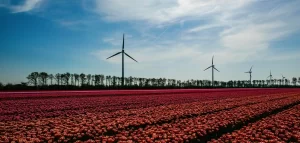The UK Government’s target of deploying 24GW of nuclear generation capacity by 2050 confirms the key role it sees nuclear playing in the UK’s net zero transition. However, it is nearly 30 years since the most recent plant, Sizewell B, came online and Hinkley Point C will not be generating electricity until at least 2029.[1] A significant step change is required.
The Civil Nuclear Roadmap published on 11 January 2024, first promised in the October 2021 Net Zero Strategy[2], sets out the path to realising the UK’s nuclear ambitions of delivering another large-scale reactor beyond Sizewell C and securing investment decisions for 3-7GW every five years from 2030 to 2044, with clear actions to:
- support the financing of nuclear new-builds.
- remove planning and regulatory barriers to nuclear projects.
- collaborate with industry on policy solutions.
Below, Brevia explores key announcements from the Roadmap and how industry can respond.
Financing new nuclear
A significant obstacle for new nuclear projects in the UK has been financing, leading to the abandonment of ventures like Hitachi’s Wylfa Newydd and Toshiba’s Moorside. The Roadmap introduces flexibility by allowing investors and developers to engage with government on the suitability of Contracts for Difference (CfD) and Regulated Asset Base (RAB) financing models for their projects. This flexibility is particularly crucial to small and advanced modular reactor (SMR/AMR) developers, who need to balance the risk of delivering first-of-a-kind projects with lower projected costs and timescales.
The CfD model, used for Hinkley Point C, involves the developer financing the entire project, with the Government agreeing to pay a ‘strike price’ for electricity. While incredibly effective in delivering new renewable capacity through the annual CfD auctions, this model is not without drawbacks. Hinkley Point C faced significant challenges in reaching Final Investment Decision (FID), and has seen delays and rising costs, all of which are borne by the investors.
The RAB model, introduced through the Nuclear Financing Act 2022, provides a regulated revenue stream through the construction, commissioning, and operation of a project, offering greater certainty for investors.[3] However, even using this model, there are concerns about reaching FID on Sizewell C, despite the Government having already committed £2.5bn to bolster investor confidence.[4]
Whilst opening discussions over financing models is welcome, wider reforms are required to restore investor confidence in the UK’s ability to deliver nuclear projects at pace and on budget.
Regulatory and planning reforms
Acknowledging the impact of regulatory and planning obstacles to deliver new nuclear capacity, the Roadmap proposes reforms to simplify technology and site selection processes.
Firstly, the Office for Nuclear Regulation will streamline design assessment and licensing processes for new reactor technologies; publish guidance for parties seeking Generic Design Assessment; and launch a framework for regulatory engagement with vendors entering the UK market.[5] Two consultations are also underway on 1) alternative routes to market for new nuclear projects, and the 2) approach to siting new nuclear power stations beyond 2025.
The first consultation explores potential applications of nuclear technologies beyond baseload power provision, including industrial heat and power, district heating, and synthetic fuels and hydrogen production.[6] The second aims to develop a new Nuclear National Policy Statement (EN-7) that accommodates SMR and AMR technologies.[7] This involves a new criteria-based approach to siting, allowing developers to undertake initial screening of a proposed site at the pre-application stage, rather than selecting from the list of eight sites designated under the current Nuclear National Policy Statement (EN-6).
Taken together, this package of reforms demonstrates a proactive approach to overcoming regulatory hurdles, fostering collaboration between industry and regulators, and unlocking new avenues for nuclear projects to progress in the UK.
Opportunities for industry
In the short term, industry should engage with both consultations on the new approach to siting and alternative routes to market. HM Treasury will also consult this year on the inclusion of nuclear energy in the UK Green Taxonomy, aiming again to make investments in nuclear projects more attractive.
Whilst the Roadmap provides greater clarity on several issues, it is not exhaustive. A key area of ambiguity is skills and supply chains. Besides a commitment to publish the Nuclear Skills Taskforce recommendations in early 2024 and collaborate with delivery partners to strengthen the nuclear supply chain, there were few flagship announcements. With the Roadmap due for an ‘update’ by the end of 2025, there is room for industry to share insight and advocate for measures that deliver meaningful change on these issues.
The measures announced in the Civil Nuclear Roadmap present both immediate risks and opportunities to companies operating in the nuclear sector. Industry must take this opportunity to engage with the Government, identifying areas where the Roadmap does not go far enough, or where clearer direction is required, and work with officials to develop appropriate solutions.
BREVIA NUCLEAR PROVIDES STRAIGHTFORWARD PUBLIC AFFAIRS AND PUBLIC RELATIONS SUPPORT TO ORGANISATIONS OPERATING IN THE UK CIVIL NUCLEAR SECTOR.
Discover how Brevia Nuclear can help you and your organisation by visiting: https://www.brevia.co.uk/sectors/civil-nuclear/. You can also contact the Brevia Team on 020 7091 1650 or email contact@brevia.co.uk
Notes
[1] Sarah White, Jim Pickard and Rachel Millard, Financial Times, ‘UK nuclear plant hit by new multiyear delay and could cost up to £46bn’, 23 January 2024, Link
[2] Department for Business, Energy and Industrial Strategy, ‘Net Zero Strategy: Build Back Greener’, 19 October 2021, Link, p.103
[3] Department for Business, Energy and Industrial Strategy, ‘Future funding for nuclear plants’, 26 October 2021, Link
[4] Department for Energy Security and Net Zero, ‘Further steps to prepare Sizewell C for construction’, 22 January 2024, Link
[5] Department for Energy Security and Net Zero, ‘Civil Nuclear: Roadmap to 2050’, 11 January 2024, Link, p.33
[6] Department for Energy Security and Net Zero, ‘Alternative routes to market for new nuclear projects’, 11 January 2024, Link
[7] Department for Energy Security and Net Zero, ‘Approach to siting new nuclear power stations beyond 2025’, 11 January 2024, Link




